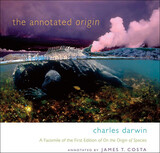
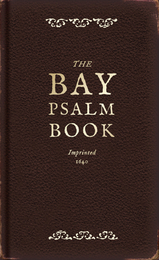
Originally published in 1640 as The Whole Booke of Psalmes Faithfully Translated into English Metre, the unassuming psalter undertook the translation of Hebrew psalms into English verse for a growing population of New England Puritans unhappy with contemporary translations and in need of a version that would better represent their beliefs. The book became popularly known as The Bay Psalm Book, named after the Massachusetts Bay Colony in which its translators—among them the ministers John Cotton and Richard Mather—lived.
This beautiful facsimile edition of The Bay Psalm Book reproduces one of the best remaining copies of the psalter, including the translators’ preface and the original printer’s errors and binding marks. An introduction by Diarmaid MacCulloch details the book’s place in American religious and cultural history and explains how the psalter came to have such a profound effect on the course of the Protestant faith in America.

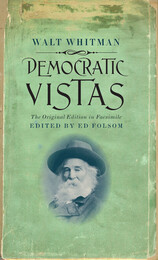
Written in the aftermath of the American Civil War during the ferment of national Reconstruction, Walt Whitman’s Democratic Vistas remains one of the most penetrating analyses of democracy ever written. Diagnosing democracy’s failures as well as laying out its vast possibilities, Whitman offers an unflinching assessment of the ongoing social experiment known as the United States. Now available for the first time in a facsimile of the original 1870–1871 edition, with an introduction and annotations by noted Whitman scholar Ed Folsom that illuminate the essay’s historical and cultural contexts, this searing analysis of American culture offers readers today the opportunity to argue with Whitman over the nature of democracy and the future of the nation.
Living in Washington, D.C., where Congress granted male African Americans the right to vote nearly five years before the fifteenth amendment extended that right across the nation, and working for the office charged with enforcing the new civil rights amendments to the Constitution, Whitman was at the volatile center of his nation’s massive attempt to reconstruct and redefine itself after the tumultuous years of civil war. In the enduring cultural document that Democratic Vistas has become, the great poet of democracy analyzes the role that literature plays in the development of a culture, the inevitable tensions between the “democratic individual” and the “democratic nationality,” and the corrosive effects of materialism on the democratic spirit.
His own conflicting racial biases notwithstanding, Whitman in Democratic Vistas offers his most eloquent and extended articulation of the beckoning American democratic future. At a time when the nation has elected a president whom Whitman could never have imagined, his controversial and provocativebook is a timely reminder of those occasions when we experience the expansion of America’s democratic dream.
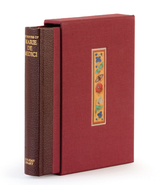
At the turn of the fifteenth century, private devotionals became a specialty of the renowned Ghent–Bruges illuminators. Wealthy patrons who commissioned work from these artists often spared no expense in the presentation of their personal prayer books, or “books of hours,” from detailed decoration to luxurious bindings and embroidery.
This manuscript owes its name to the French queen, Marie de Medici, widow of King Henri IV. The manuscript was painted by an artist known as the David Master, one of the renowned Flemish illuminators of the sixteenth century. Fine architectural interiors, gorgeous landscapes, and detailed city scenes form the subjects of three full-size illuminations and forty-two full-page miniatures. It is one of the finest examples of medieval illumination in a personal prayer book and the most copiously illustrated work of the David Master to survive.
Together with a scholarly introduction that gives an overview of Flemish illumination and examines each of the illustrations in detail, this full-color facsimile limited edition, bound in linen with a leather quarter binding and beautifully presented in a slipcase, faithfully reproduces all 176 leaves of the original manuscript.

This edition of Isaac Newton’s Principia is the first edition that enables the reader to see at a glance the stages of evolution of the work from the completion of the manuscript draft of the first edition in 1685 to the publication of the third edition, authorized by Newton, in 1726.
A photographic reprint of this final version, the present edition exhibits on the same page the variant readings from the seven other texts. This design allows the reader to see all the changes that Newton introduced and to determine exactly how the last and definitive edition, published a few months before Newton’s death, grew from earlier versions.
A series of appendices provides additional material on the development of the Principia; the contributions of Roger Cotes and of Henry Pemberton; drafts of Newton’s preface to the third edition; a bibliography of the Principia, describing in detail the three substantive editions and all the known subsequent editions; an index of names mentioned in the third edition; and a complete table of contents of the third edition.
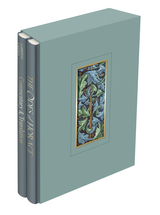
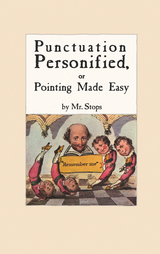
A series of larger-than-life characters in the book, including Mr. Stops, Counsellor Comma, and the hero, Young Robert, humorously bring its lessons to life with witty and amusing verse such as: "See, how Semicolon is strutting with pride; Into two or more parts he'll a sentence divide." Lively and colorful engravings, meanwhile, infuse the book with an entertaining spirit, while also reinforcing the lessons laid out in its cheerful rhymes.
It is evident to see how a child would have enjoyed learning about grammar through Punctuation Personified, as its simple but instructive verse and vibrant illustrations skillfully open up a fresh world of knowledge. This new edition, featuring a modern introduction, will delight and amuse readers of all ages.
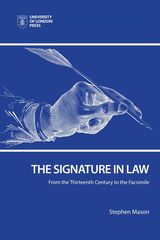
Since the thirteenth century, the signature has been used to demonstrate proof of intent. This book puts the concept of the signature into a broad legal context, setting out the purposes and functions of a signature. Drawing on cases from common law jurisdictions across the world, this book demonstrates that judges expanded the meaning of the signature as technologies developed and were used in unanticipated ways.
Following an overview of the historical methods used to demonstrate proof of intent and authentication, the book considers the judicial response to the variations in form that signatures have been subject to over the past two hundred years, from initials, partial signatures, and fingerprints to rubber stamps and typewriting. Past judicial decision-making not only demonstrates the flexibility of the form a signature can take but also confirms that judges had the flexibility of mind to accept the first forms of electronic signature (telex, facsimile transmission) without the aid of special legislation. In this way, the signature is a prime example of the inherent flexibility of the English common law.
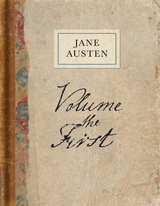
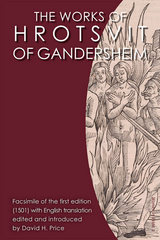
These works by a tenth-century woman, who wrote plays when no one else in Europe was writing plays and who imitated the style of Terence when most people thought the classics had been forgotten, caused a literary sensation when they were first published in 1501.
READERS
Browse our collection.
PUBLISHERS
See BiblioVault's publisher services.
STUDENT SERVICES
Files for college accessibility offices.
UChicago Accessibility Resources
home | accessibility | search | about | contact us
BiblioVault ® 2001 - 2024
The University of Chicago Press









